How to set yourself up for a successful game localization project
Getting ready to localize your game? Learn what to consider before starting a localization project, from setting up your file to creating a style guide.
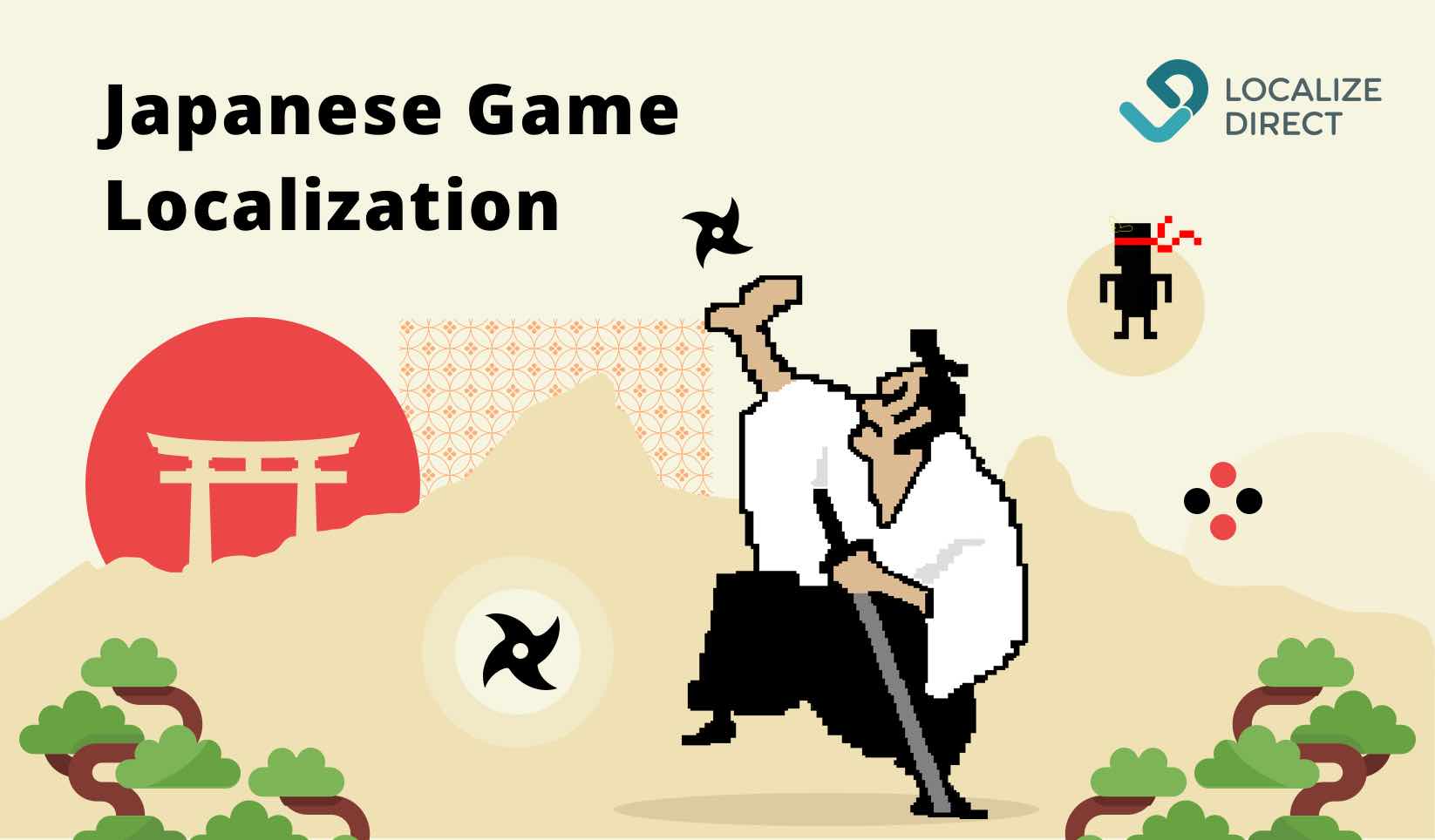
Japan pioneered video gaming and continues to be among the strongest industry players in both game production and the community of local players. If you’re thinking about game translation into Japanese, you need to understand how the local market operates, what gamers enjoy the most, and what can be prohibited.
In this post, we’ll talk about the Japanese game market and the preferences of local players, and we’ll also cover the 10 translation tips that will help you prepare for Japanese game localization.
KEY TAKEAWAYS:
WHAT’S COVERED:
Let’s take a deeper look at some of the unique features of Japanese gaming.
Japan is the 3rd biggest game market in the world. As per Statista, the revenue of the Japanese video game market is estimated at $28 billion in 2024. Together with the mobile game sector, the overall revenue is estimated at $44 billion and is projected to reach more than $60 billion by 20209.
The average revenue per user is comparatively high in Japan, especially in the sector of mobile games, where Japanese players surpass all other countries. For instance, currently, the ARPU is $119 in the US and $480 in Japan.
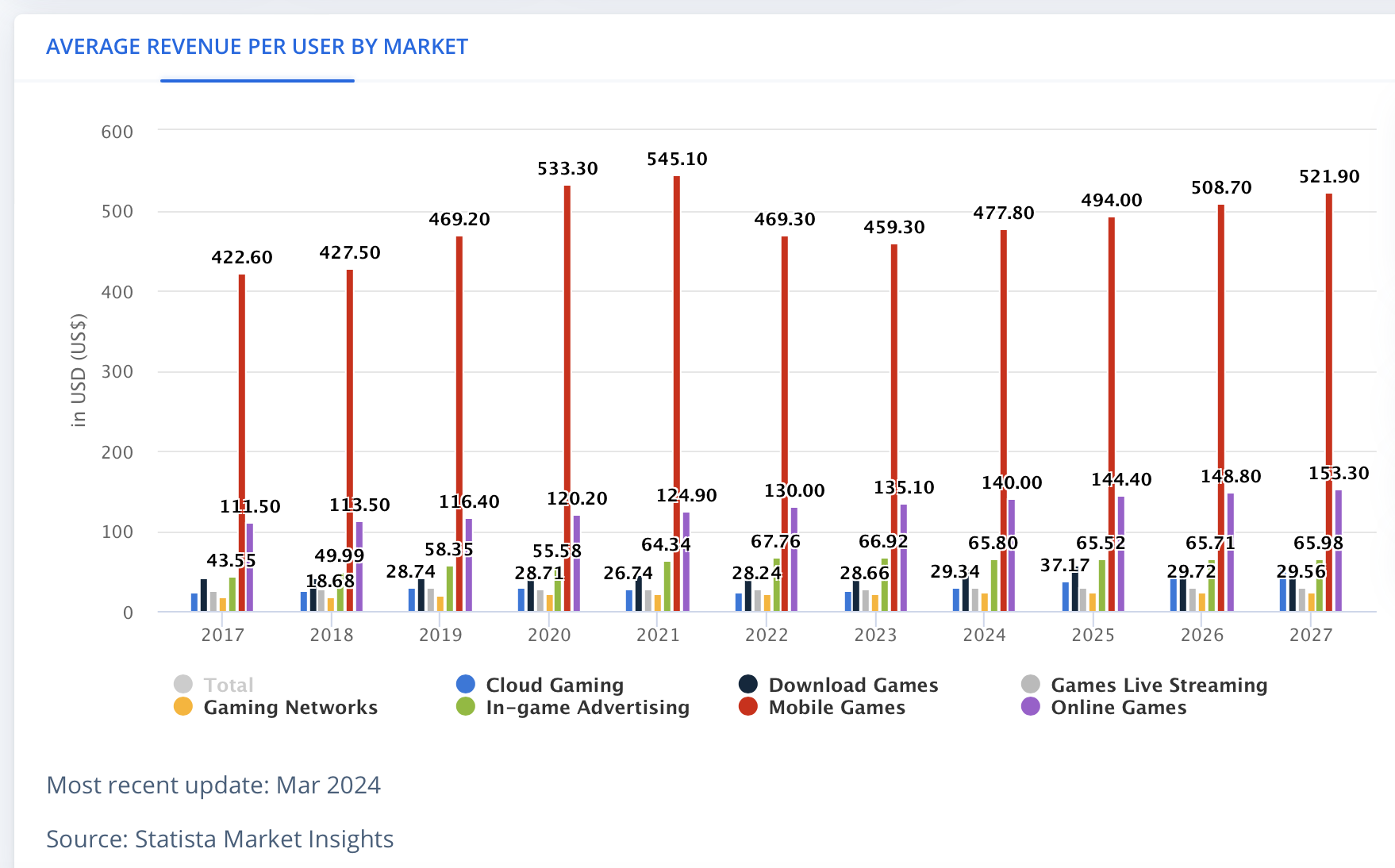
Japanese ARPU in different sectors of games. Source: Statista
Given the extremely high ARPU in mobile games, it doesn’t come as a surprise that the mobile market brings the most revenue. According to the Newzoo report, 46% of Japanese smartphone players pay for games and Japan accounts for the 26% share of Asian gaming revenues. If you have a mobile title, translating it to Japanese can be very rewarding.

Revenues of different game sectors in Japan. Source: Statista
Japan has been a pioneering country in many aspects related to gaming and still is the leading manufacturer of consoles. The rising demand for gaming peripherals pushes for innovations, especially in VR and AR applications. The domestic market of game production remains more stable compared to the Western one which has seen many layoffs and budget cuts during the last years. There are increasingly more professional players in the country, and more people in general are getting access to different types of gaming.
A survey of Japanese players conducted by Newzoo revealed that 50% of local gamers play to relax, 49% play to fill time, and 45% want to explore storylines and get immersed. Compared to other countries in the region and globally, the Japanese are not into social playing and don’t pursue socialization or competition when choosing games.
Role-playing games are the leader on every platform, while simulation games also have a steady interest. Puzzle mobile games, shooters on PC, and adventure titles on console are also popular with Japanese players. Even though the most popular Japanese video games are the ones locally made (Final Fantasy or The Legend of Zelda), foreign titles can also reach impressive sales and engagement.
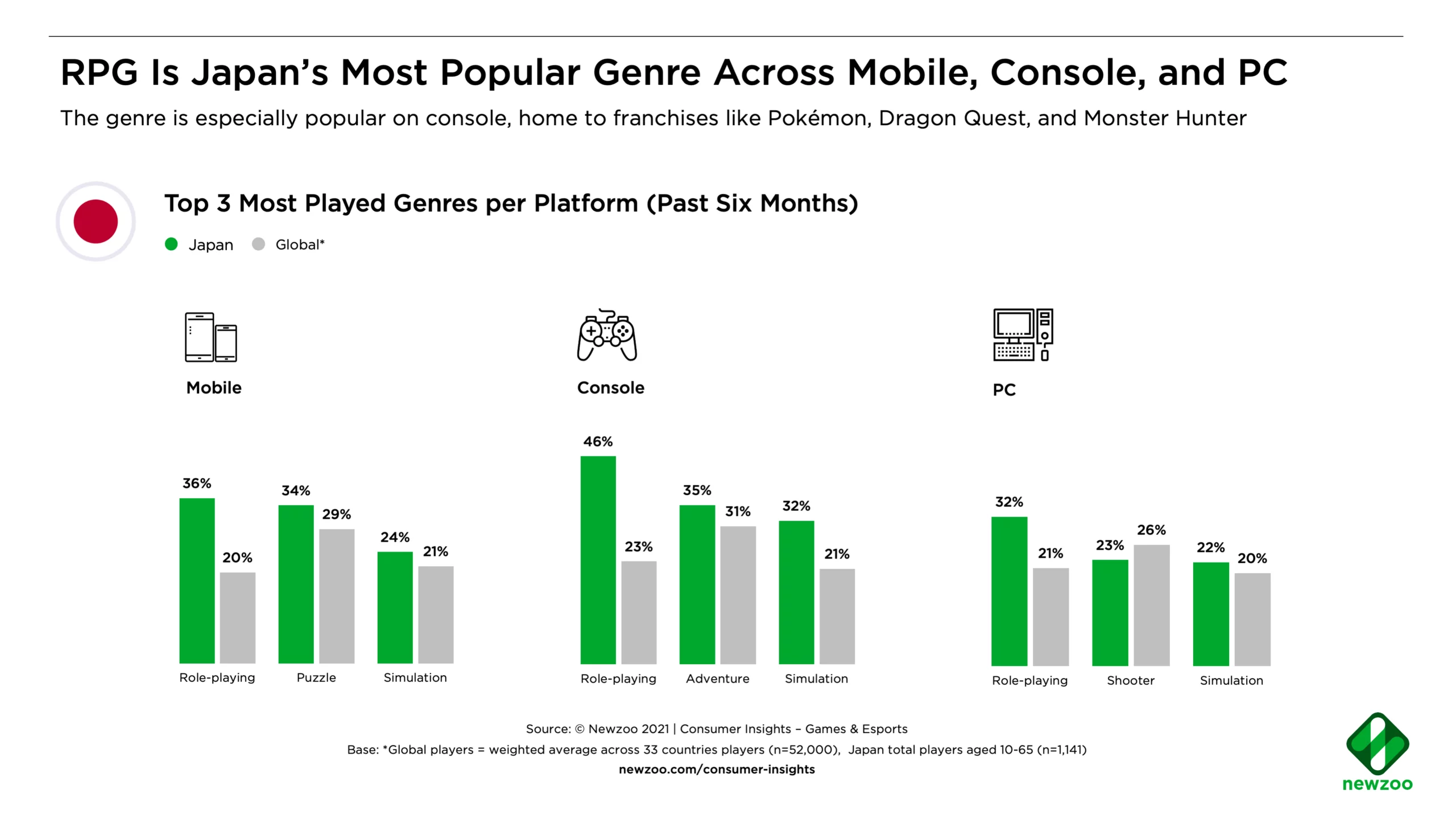
The most popular game genres in Japan. Source: Newzoo
To localize games to Japanese, you’ll need to hire native speakers who understand all the linguistic and cultural nuances. But there are things that you should understand beforehand in order to prepare for the localization process and omit common mistakes.
Unlike any European language, Japanese combines three writing systems:
On top of that, Japanese people might use some English abbreviations in the Latin alphabet organically included into a phrase in Japanese.
It’s definitely more complex than English, but the major thing to care about is to use fonts that can support the same styling of all Japanese writing systems.
For example, here’s what can a phrase containing all three scripts look like (foreign names are written in Katakana, lexical words in Kanji, and function words in Hiragana):
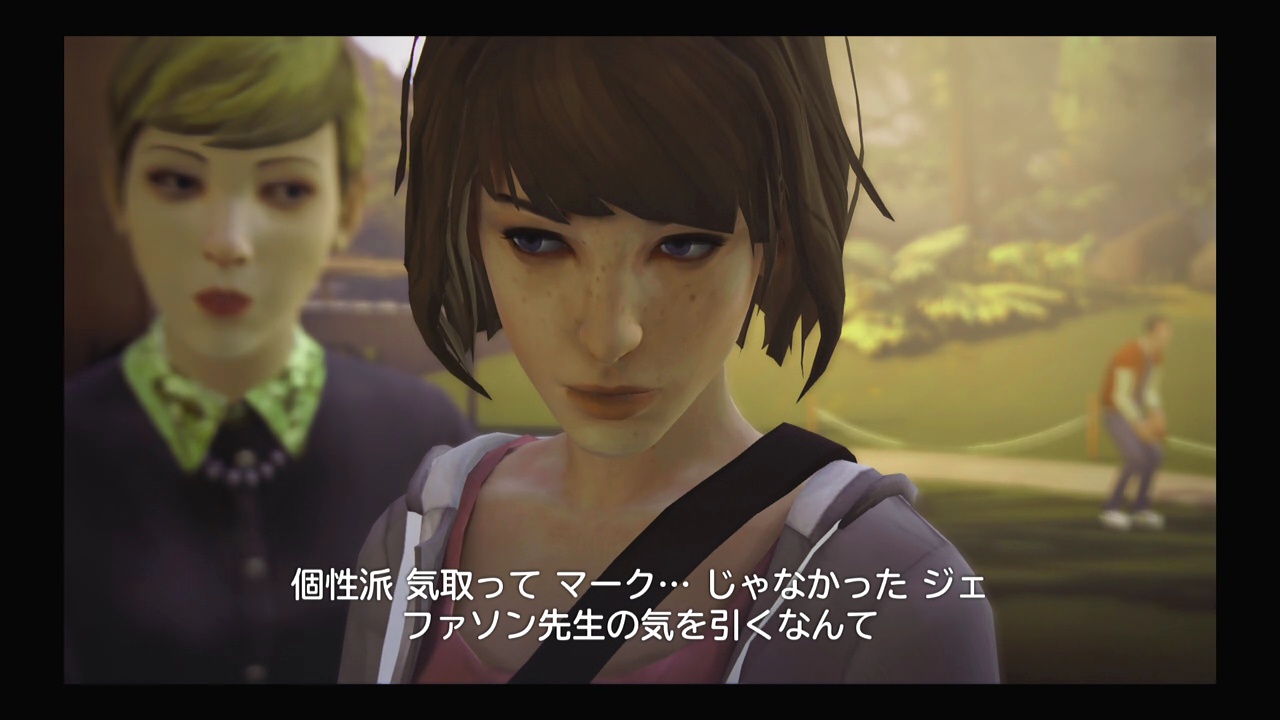
Three Japanese scripts in one phrase in a localized version of Life Is Strange. Source
Most English dialogue in games is informal unless the context suggests otherwise. However, when translated directly into Japanese, informal English speech can sometimes be perceived as too harsh.
Even when a character is meant to sound friendly, more formal phrasing is often used in Japanese due to cultural norms and conventions. The tone also depends heavily on age and power dynamics: people use more polite forms when speaking to someone older or of higher rank. Additionally, differences in speech formality are often employed for characters whose background or societal position is implied by their appearance, background, or education level. Maximum formality is typically used when speaking to strangers, while characters talking with family members or friends will use more casual language.
In the context of game localization, the key is to maintain consistency in politeness levels. Randomly switching between different levels of formality has been a common issue in Japanese video game translations, as seen in games like Stardew Valley and Harry Potter, where characters unexpectedly shift between speech styles.
Make sure to involve some native speakers in the translation process itself and in the localization QA.
The topic of gender in Japanese may also seem complicated to Western gamers. There are multiple pronouns used exclusively by men or women, along with sentence-final particles and other grammatical elements or specific words—all of which signify gender identity. These conventions operate in addition to those that reflect personal traits, age, background, or the game’s setting—further complicating the matter and requiring the expertise of a professional Japanese translator to navigate these subtleties.
In modern Japanese society, more users may be straying from traditional conventions (such as in corporate environments where more gender-neutral language is used), but not to the extent that gender nuances are disregarded—especially if your game has a strong historical background or features fictional characters.
Many games have been criticized by Japanese players for gender inconsistencies. For example, in Fallout 4, a female character’s speech was subtitled using male speech patterns while being dubbed with feminine speech patterns. Another example is the Harry Potter game: in the screenshot below, the male character Chester ends his sentence with the particle わ, which is typically used by women.

Problems with gendered language in the Japanese localization of the Harry Potter game. Source
Speaking of pronouns, it’s not just a gender issue in Japanese. There are many subtle nuances in pronoun usage, where a simple ‘I’ can be translated into dozens of words depending on the context, including the character of the speaker and the person they are addressing.
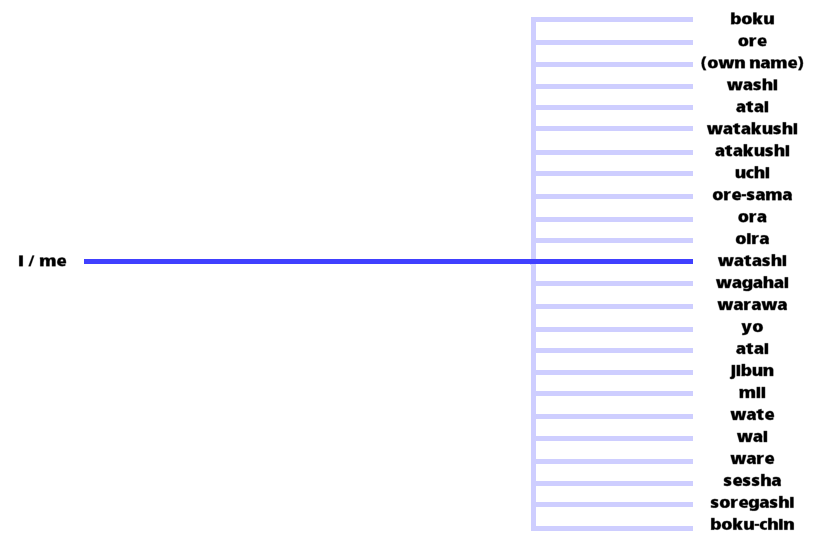
Problems with gendered language in the Japanese localization of the Harry Potter game. Source
Besides that, Japanese often omit pronouns instead of using them repeatedly like in English. Ironically enough, your translators need to know the differences between different pronouns, but they won’t be using them that much.
There are several grammatical differences between Japanese and English that might lead to some incorrect translations if original phrases are broken down or placeholders are not inserted properly:
Japanese players have a long history with English-language games, and even though their overall English proficiency may not always be very high, they predominantly understand most gaming-related vocabulary in English.
As seen in this collection of older Japanese video game examples, even Japanese developers sometimes opt to use English in their games. Many English phrases, especially related to game titles or user interfaces, were commonly used.
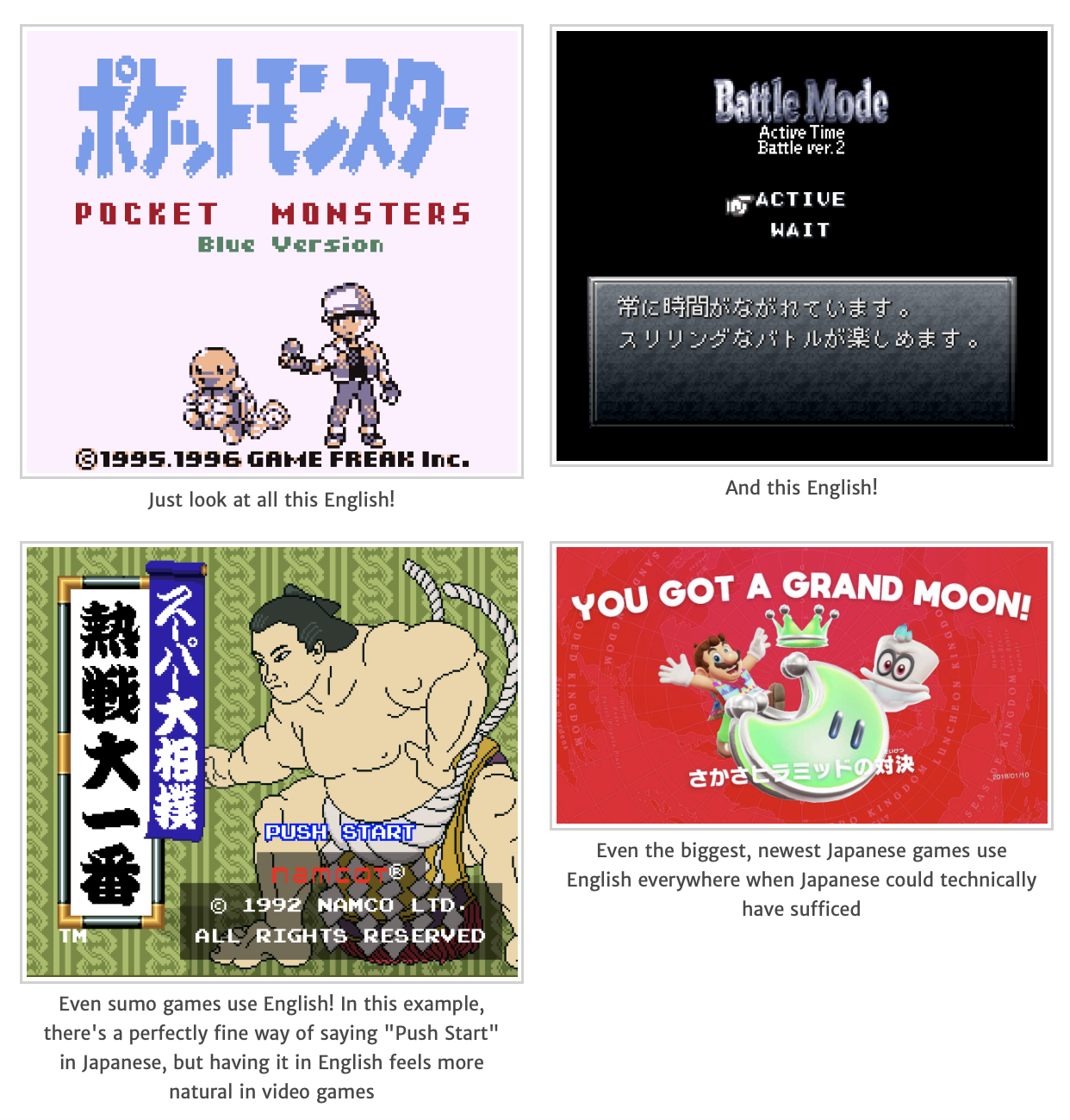
The use of English in Japanese versions of games. Source
Research localized versions of the games in a similar genre and style or consult with native players on whether you should leave some menu items, notifications, or other elements in English.
The Japanese language doesn’t have some of the sounds that English or other European languages have. For instance, there’s no clear “L” sound, and words borrowed by the Japanese usually replace it with “R.”
With that in mind, double-check names and other proper nouns with sounds that don’t exist in Japanese. As it’s generally a good practice to adapt names to the target languages, in the below example, “Ratchet” and “Clank” from the eponymous game series are rendered as “Rachetto” and “Kuranku” in Japanese.
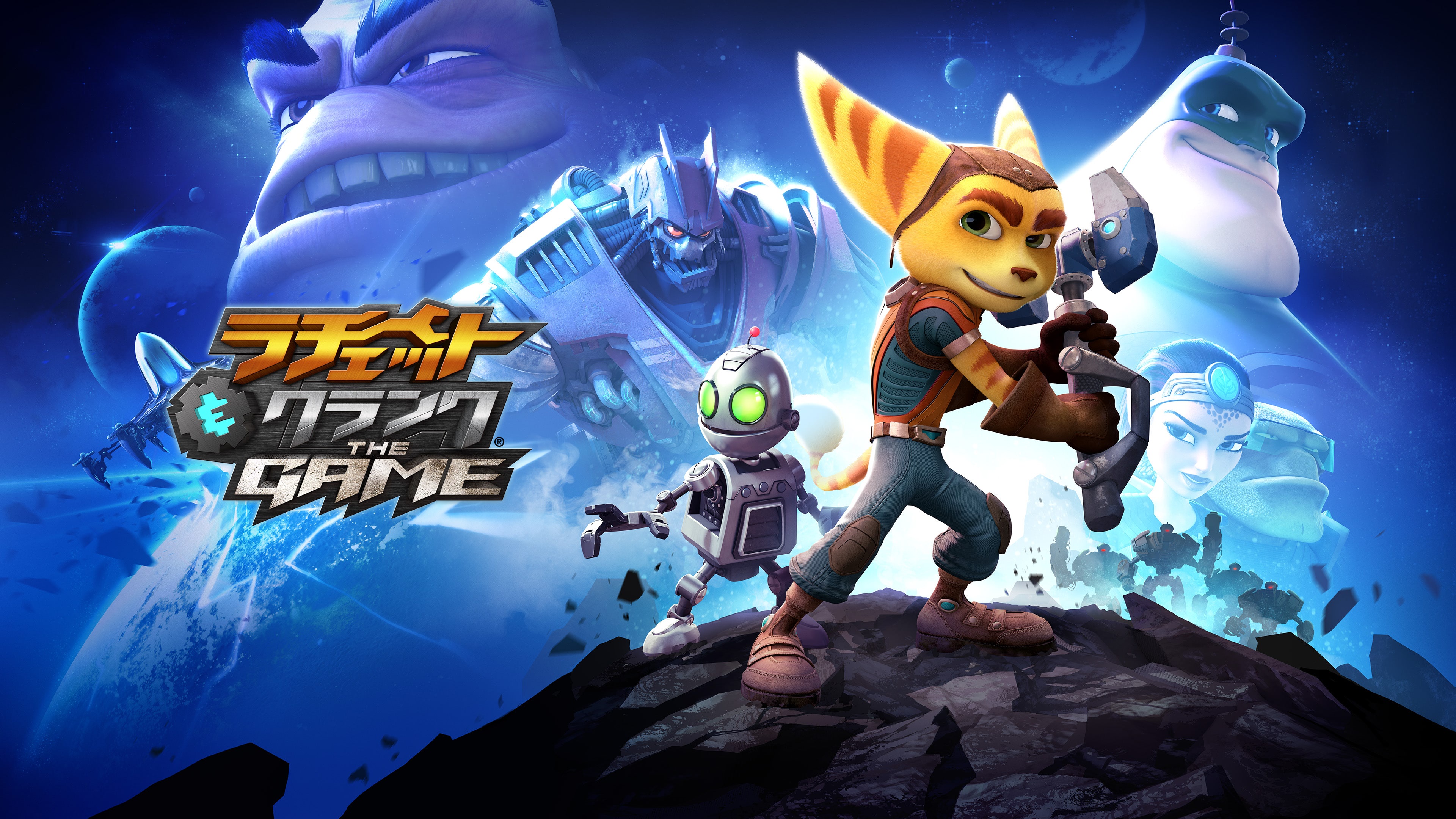
Ratchet and Clank turned Rachetto and Kuranku in the Japanese game localization. Source
While there are some differences in date and time notation in different countries, they mostly concern the order of things (year-month-day) and the use or non-use of AM/PM. In turn, Japanese versions are also often written with kanji signifying “year,” “month,” “day,” “hour,” “minute,” and “second.”
For example, 07-15-2024 will be written like “2024年7月15日.” It’s also common to indicate a particular weekday in the parenthesis. Culturalization of these things is important not only for the in-game content but also for promotional materials. Take a look at the date on the announcement poster of Life Is Strange:

Japanese date format on the Life Is Strange poster. Source
All Japanese versions of video games have to be reviewed by regulatory bodies, which differ by platform. For instance, the Computer Entertainment Rating Organization reviews console games, while the Ethics Organization of Computer Software is responsible for PC games.
The Japanese video game rating system specifies whether a game will be released for the general public or with some age restrictions. Sometimes, the regulators would ban certain titles or censor particular scenes or missions.
In general, there are two major things that won’t let you release a game in Japan: excessive gore and sexual content. You’ll have to get rid of all ultra-violent scenes, body dismemberment, nudity, and, most likely, references to atomic bombs.
If developers don’t agree to change censored content, the game won’t be released, which happened, for example, to the Callisto Protocol. But most popular games agree to alter some things. For instance, Grand Theft Auto: San Andreas saw lots of changes to make it ready to fit the Japanese video game rating system requirements: developers removed sexual references, violence against civilians, pimp missions, the possibility to kill birds, bone-cracking sounds, and many other things. Last, but not least, they even changed the word “narcotics” to “sake.”
There are also cases when a game was completely rewritten: Destroy All Humans was deemed too cruel, and the developer company partnered with professional sci-fi writers in Japan to make the game comical and dilute the cruelty. It ended up becoming a classic of weird games that includes a lot of references to local culture (anime, tokusatsu, etc.).
It’s always a good idea to cooperate with local stars and marketers to promote the game. Here are some of the promotion approaches that have worked well for foreign games localized for the Japanese market:
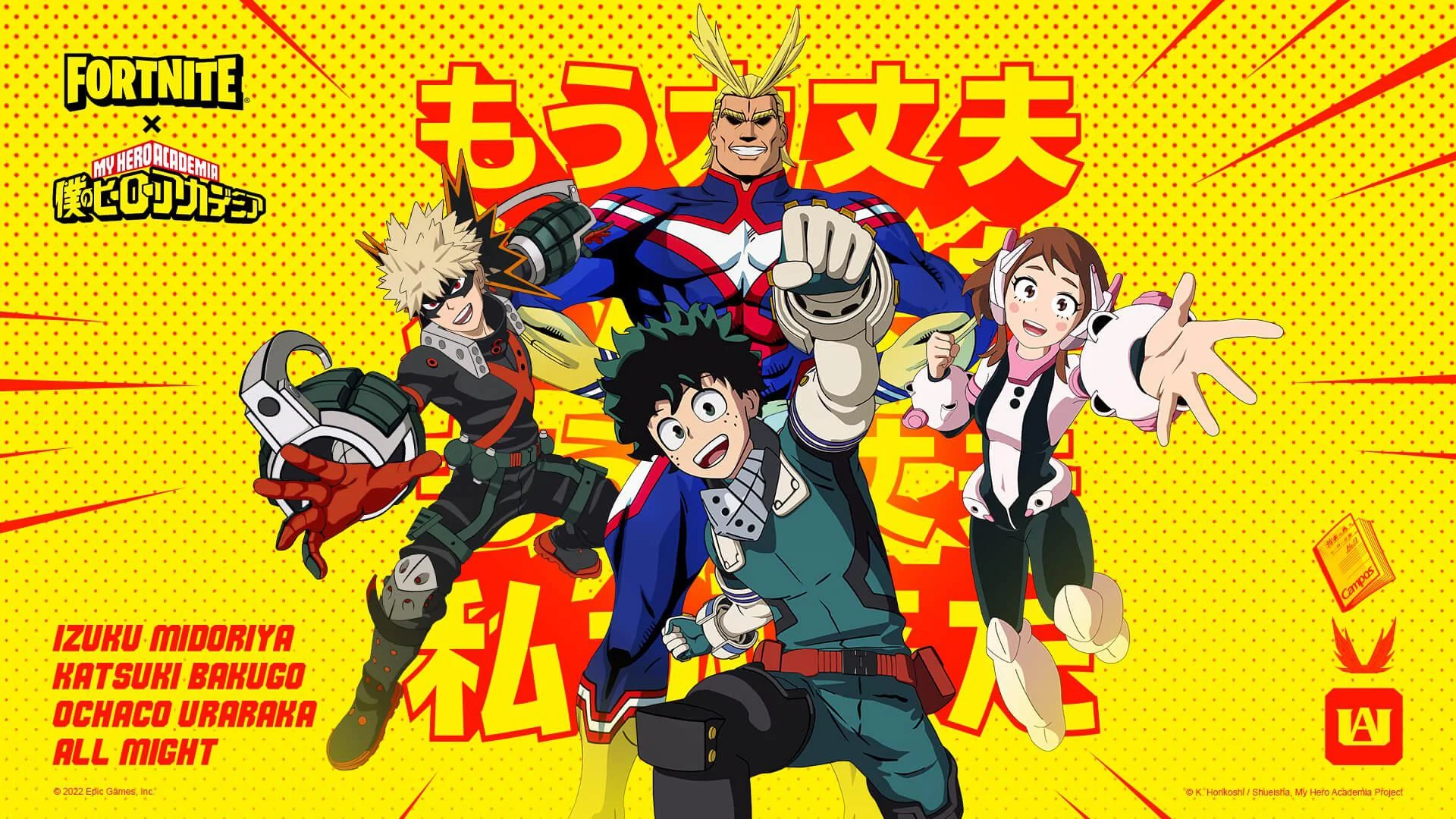
Collaboration of Fortnite and My Hero Academia. Source
For successful game translation to Japanese, you’ll need to hire native speakers who are familiar with the local gaming culture. But before you do so, make sure that you can properly prepare for the localization process: sentences and phrases shouldn’t be divided in your localization tool, placeholders should be used in a way that fits Japanese grammar, and so on.
Besides linguistic nuances, think about how you can make the content of the game more relevant. If there’s some violent or explicit content, consider removing it or tuning it down. If your game’s mechanics support additional skins or other elements, consider implementing something from local culture. And finally, don’t only localize the game itself but also create locally relevant promotional materials.
If you’re looking for professional game translation services,
drop us a line,
and we’ll discuss your project, cost estimate, and potential culturalization.
Getting ready to localize your game? Learn what to consider before starting a localization project, from setting up your file to creating a style guide.
Some Asian countries are absolute global leaders in the gaming industry: for instance, China, Japan, and South Korea are all in the top 4 by revenue after the US. Other markets (Southeast Asia and the Middle East) are some of the most rapidly growing ones, especially in the sector of mobile gaming.